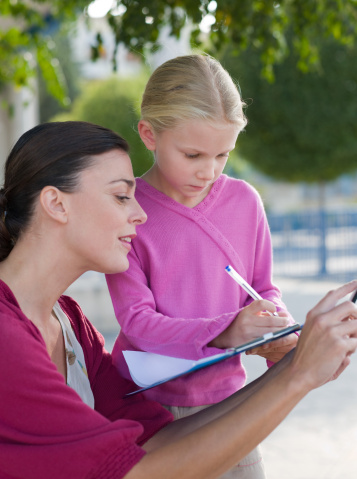5 Ways to Teach Positive Body Image to Kids

Body image is how we feel about our bodies. Whatever their size or weight, children can develop either a positive or negative view of their bodies. Body image disturbances begin as early as preschool, so parents and other adult role models need to play a pivotal role in promoting a positive body image for children.
Why? Young people with a positive image of themselves feel more comfortable and confident in their ability to succeed. They don’t obsess about calories, food or weight. They have the energy they need to enjoy physical activity. On the other hand, kids with a negative body image feel more self-conscious, anxious and isolated. They are at greater risk for excessive weight gain and for eating disorders.
You can help prevent these problems. Here are four ways you can give your child the gift of positive body image:
1. Check Out Your Own Body Image Issues
Parental body image has a powerful influence on how kids feel about their bodies. If you talk about your thighs, your latest diet or your punishing workouts, your children will naturally absorb these negative messages. They will begin to worry about the size of their thighs and think they should be dieting.
(See Teaching by Example)
2. Focus on Health Rather Than Weight
For your kid’s sake (and your own sanity), shift your focus from weight to health. Stop obsessing about numbers on the scale and concentrate on delicious nutrition and fun physical activity. Rather than placing a main focus on your children working out, also ensure that they are playing with family and friends. Children shouldn’t be worried about counting calories or restricting their intake; they need to enjoy regular meals and learn how to make smart, tasty snack choices.
Nutrition and fitness are great goals because they give us energy to do all things that we want to do. Whatever our age or size, we feel better when we take care of our bodies.
3. Find Physical Activities That Fit
Feeling fit, strong and capable is one aspect of positive body image. All children need regular physical activities that they like. Some kids are natural athletes and enjoy all sports they try. Other kids do better at individual activities, like walking or riding a bike. Some may find their niche in yoga, karate or a hip-hop dance class. It doesn’t matter what kids do for physical fitness; it just matters that they do something.
(See Family Activity Fun Starts with Parents)
4. Watch Out for Bullies
Weight-related teasing is a major basis for bullying. Encourage your school to address the issue and to support nutrition and physical education that promotes health at every size. If you believe your child is being bullied about his or her weight or for any other reason, discuss your concerns directly with the school counselor or administrator.
5. Bust the Myth of the Perfect Body
Help your child become a savvy media critic by talking with your kids about what they see on television, in magazines and online. Help them understand that the pictures of models they see in ads may have been retouched or otherwise manipulated to appear “perfect.”
How do you teach positive body image to your child? Share in the comments below!
Kids Eat Right wrote this post on behalf of the Together Counts program, and the original post can be found on the Kids Eat Right blog. Kids Eat Right is the first joint initiative from the Academy of Nutrition and Dietetics and Academy of Nutrition and Dietetics Foundation, that supports the efforts of the White House to end the childhood obesity epidemic within a generation.
Kids Eat Right is a two-tiered campaign — with components for the general public and for Academy member registered dietitians — with the goal of educating families, communities, and policy makers about the importance of quality nutrition. The Kids Eat Right campaign will also provide with resources to help Academy members become recognized leaders in childhood obesity prevention.

